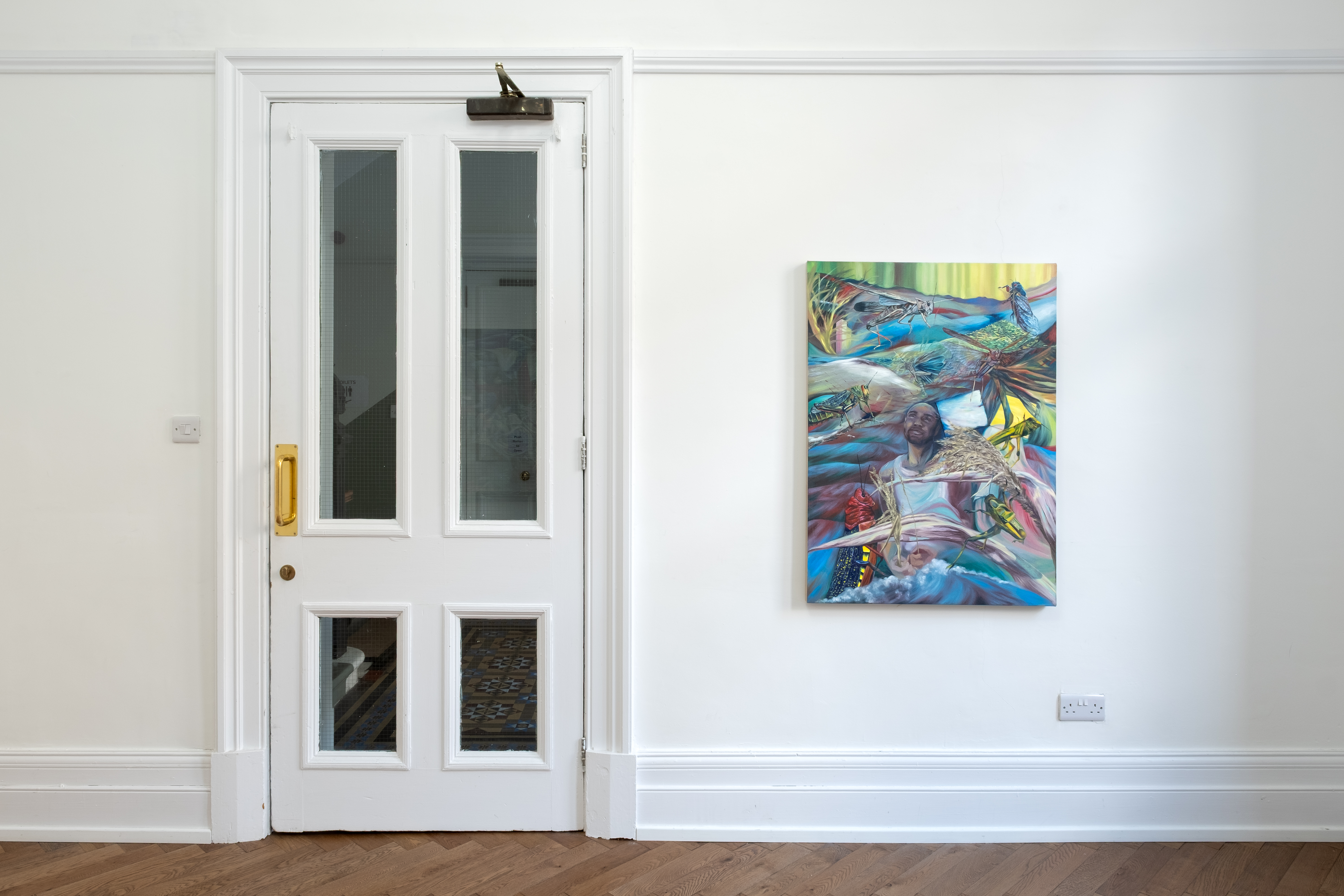


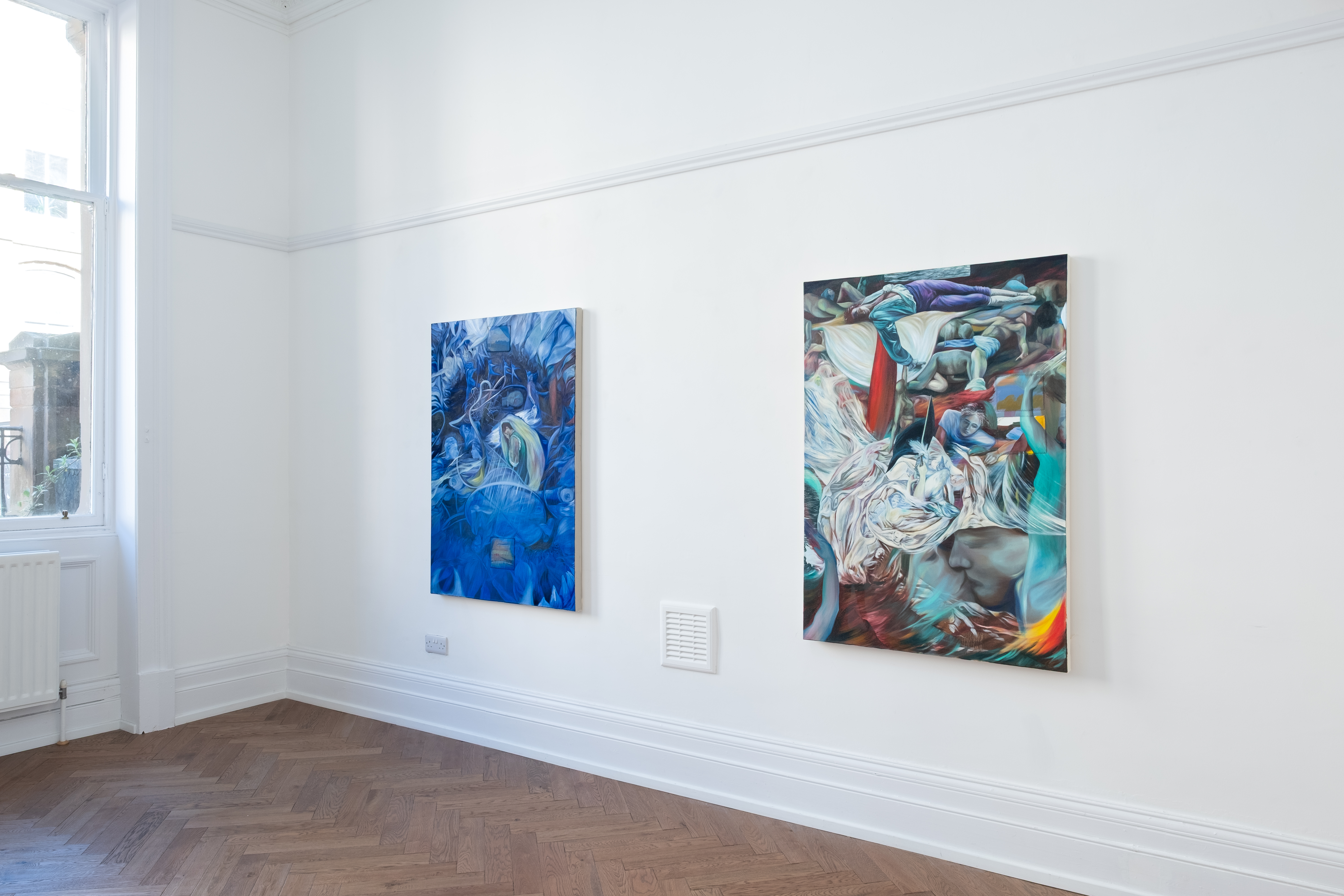

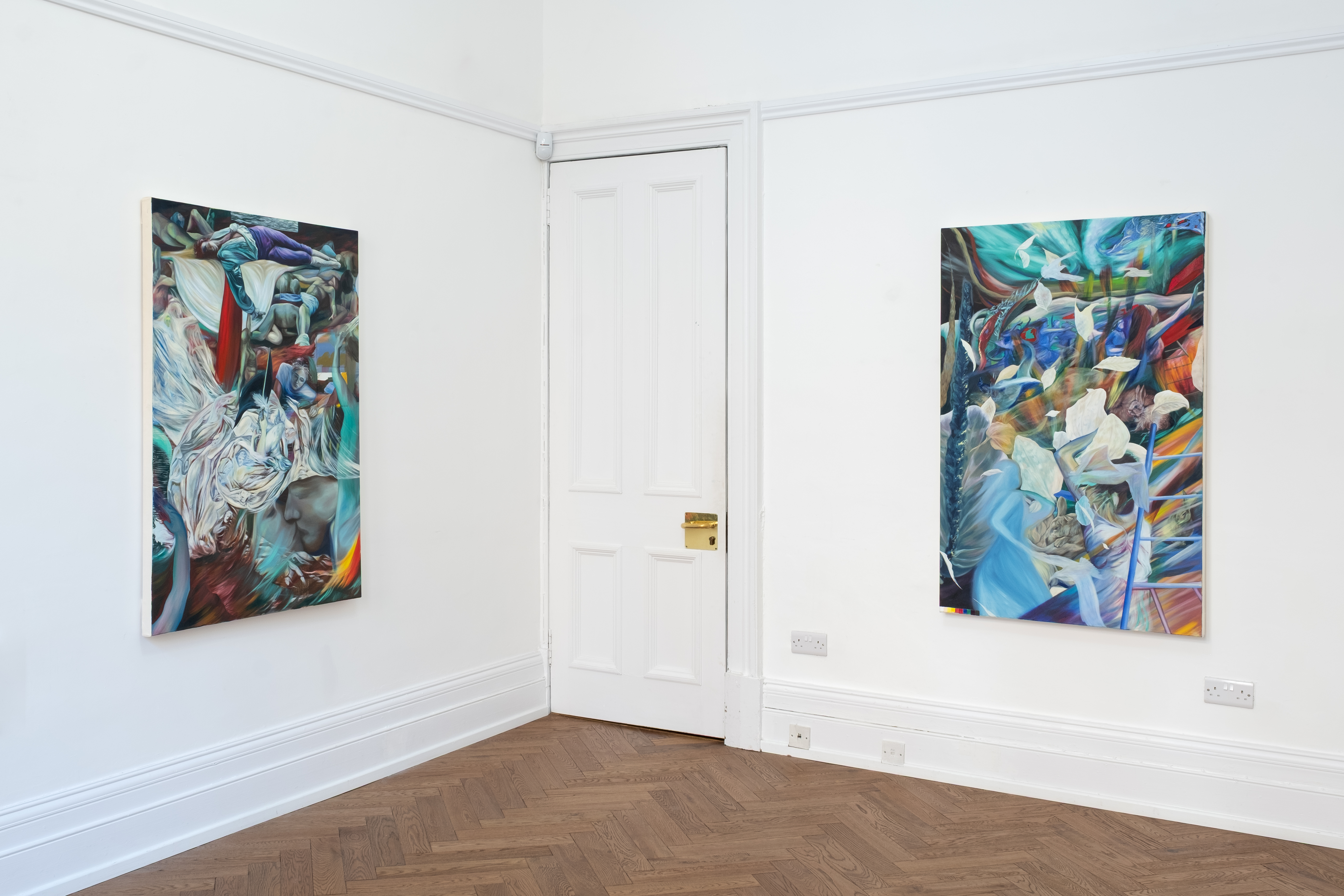



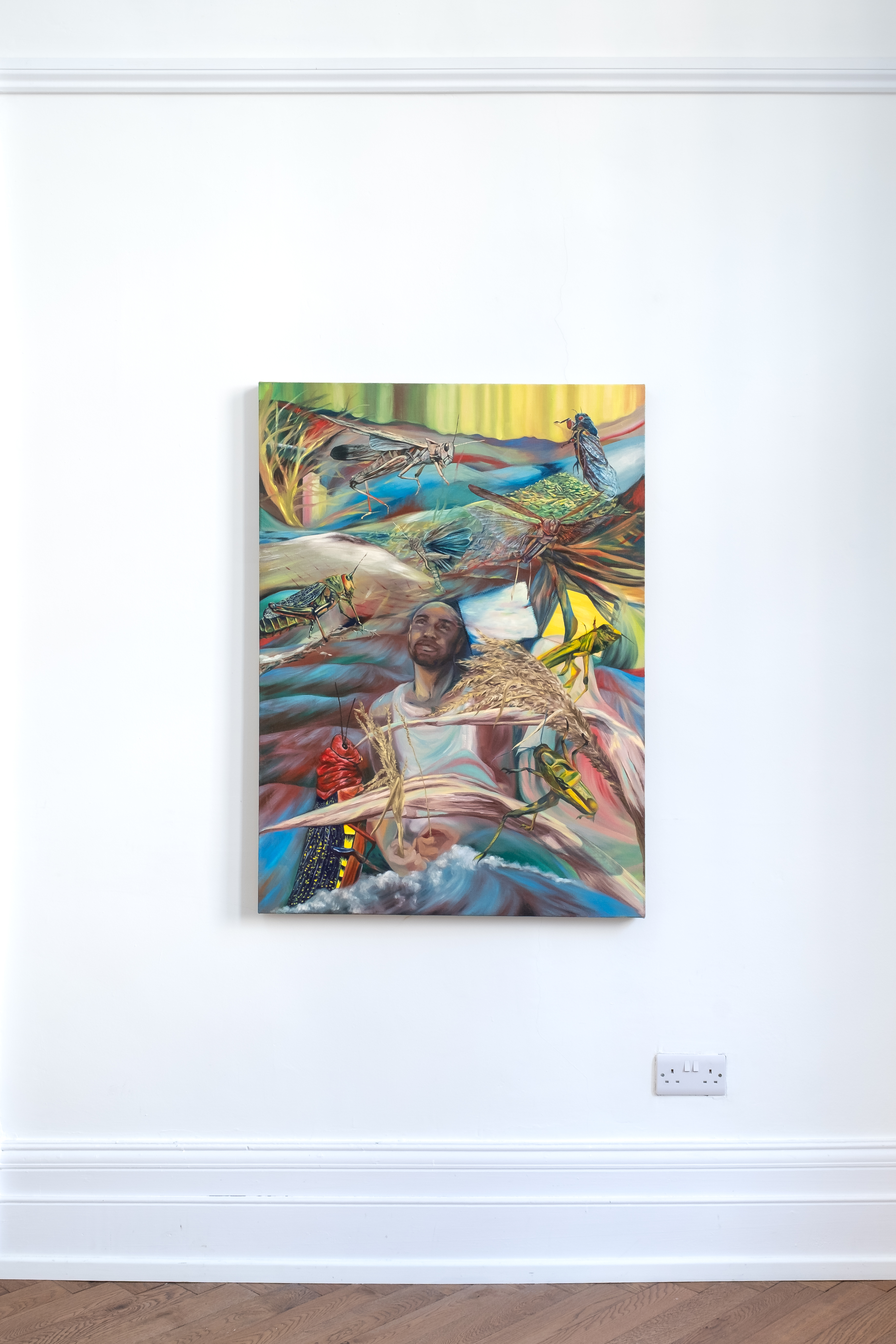



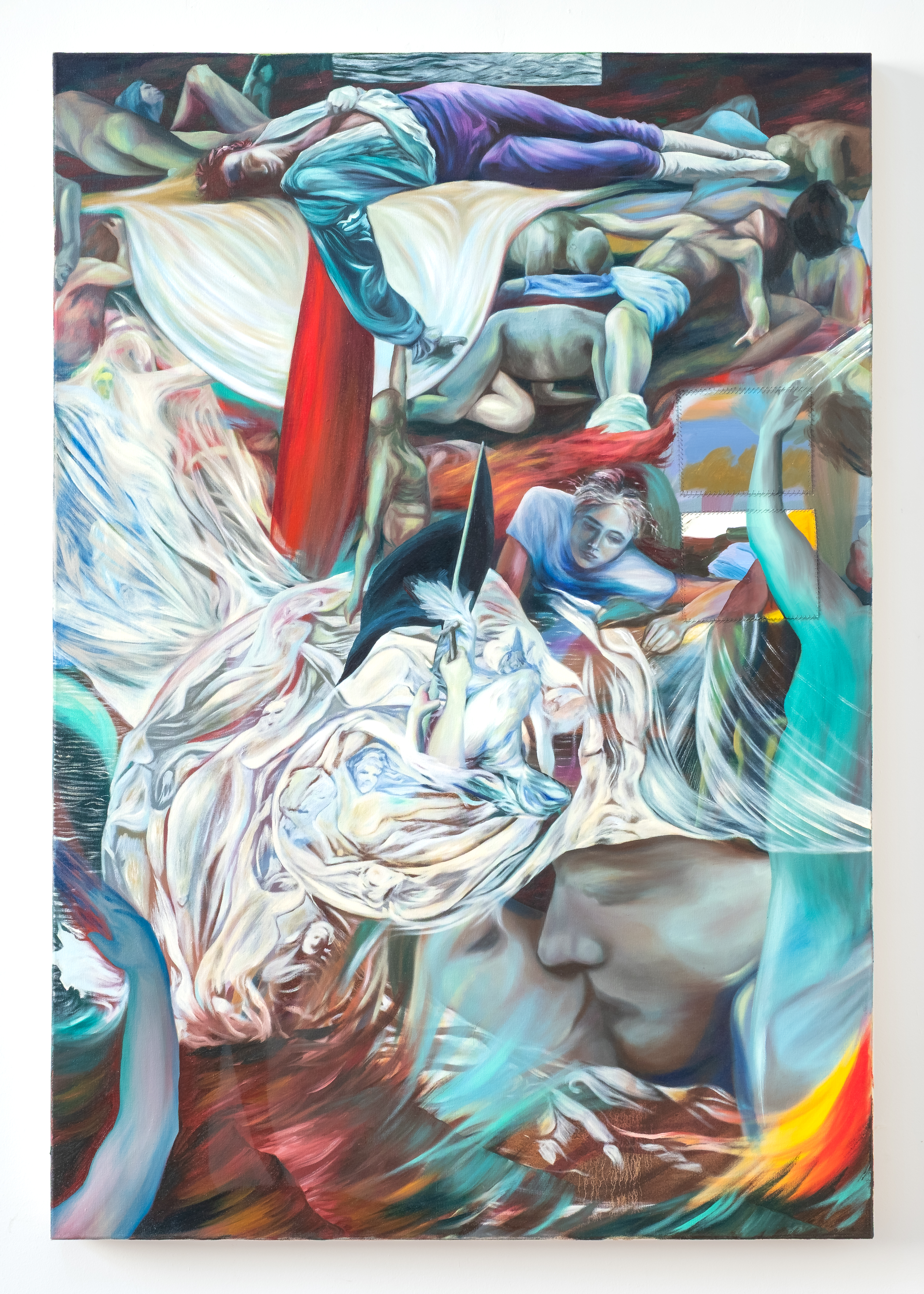

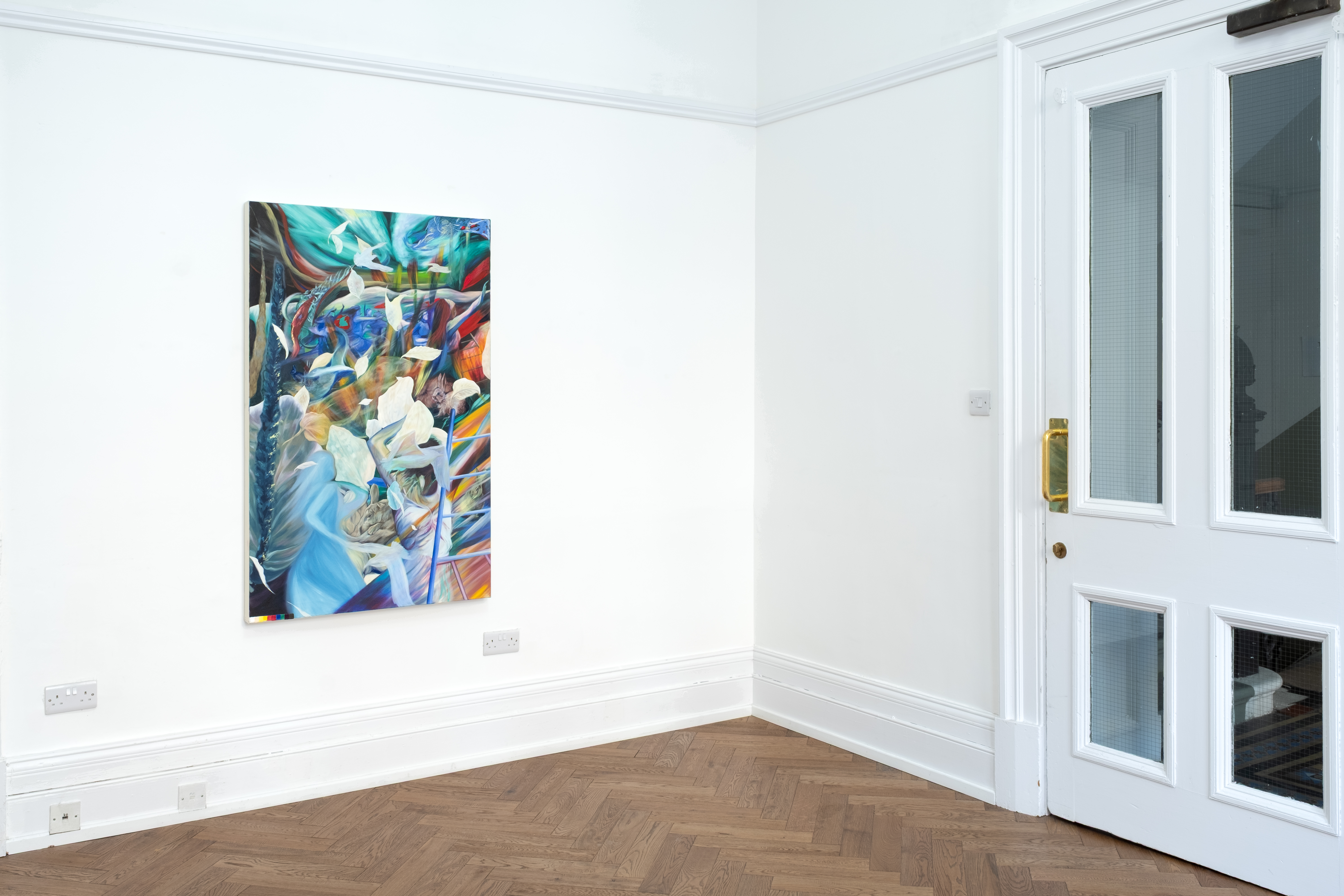
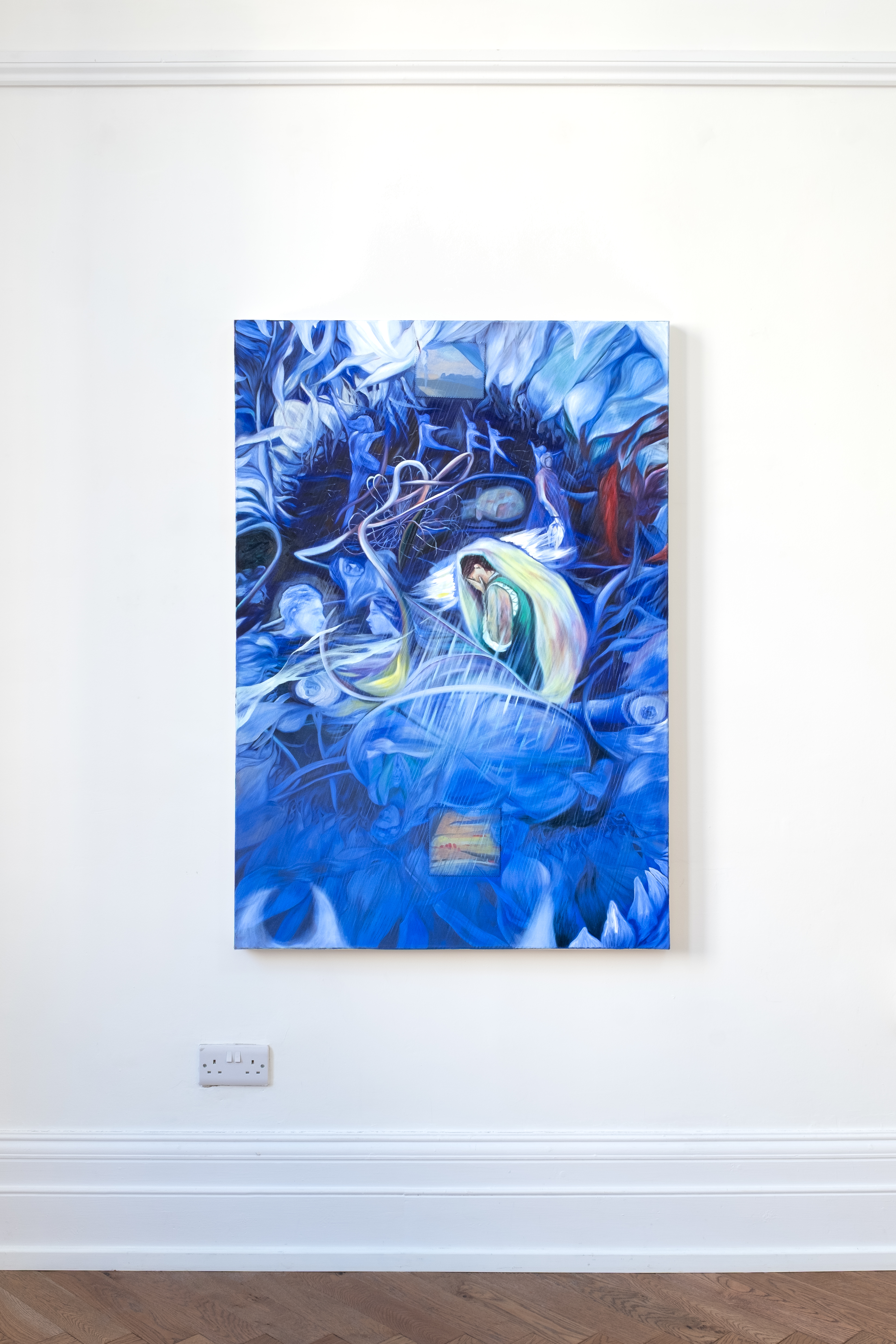

Photography by Sam O’Donnell
Worse Things Happen at Sea
Exhibition text by Sam O’DonnellA_Place Gallery is delighted to present Worse Things Happen at Sea, a solo exhibition of new paintings by Laura Gaiger.
In this exhibition, Laura Gaiger presents four previously unseen paintings, works that are the culmination of a considerable period of time, worked on with varying intensity, reflecting the ebb and flow of an artist’s concerns and ideas over several years. In her practice, Gaiger works across painting and installation to create works with deep and complex webs of personal history, social commentary, literature and art history, with a particular interest in landscape, the environment and the way human stories shape and are shaped by the places we occupy. Her works synthesise these ideas into imaginative compositions of figures, objects and landscapes, entwined with painterly marks and abstracted colour and shape.
In these four works, Gaiger takes a developmental turn in her use of the figurative tradition to deepen her exploration of these themes into the language of metaphor. Contemporary issues of how people interact with the natural world are thus tied to the mythopoetic, and remind us that humans have wrestled with their place in the natural order for their entire existence as conscious beings. Gaiger here weaves a cascade of references into an elaborate visual spectacle. The central motif is a response to Herman Melville’s Moby Dick - the fateful journey to hunt the eponymous beast of the sea, a classic meditation on the awesome power of nature and hubris in the face of it. Tossed into the waves within the paintings are nods to other works of art, theatre and literature: the apocalyptic imaginings of William Blake, tragic Shakespearean love and loss, figures transplanted from Romantic paintings and allusions to Greek myth and Arthurian legend. Gaiger lifts these titanic examples from the artistic canon and renders them with her own deeply personal painterly sensibility; a palette taking on the zany hues of the home-camcorder, owing to earlier works in her career referencing family VHS tapes. The large ideas of the works being bound up with the intimate and the immediate.
The sea is an especially potent image for our attention. “Worse things happen at sea” is a colloquial saying that persists despite our technological advances in travel, and we need to only stand and look out at the ocean from any coast for something primordial to be awakened within us. This reality confronts Gaiger daily - she lives on a boat and is a frequent sailor. The ocean is a brute fact that forces us to grapple with fear and the unknown. Gaiger’s paintings in turn then, probe at a deeper reality hidden beneath the surface. The paintings-as-collage, taking elements from so many sources, throw up a tumult of meanings and associations which coalesce into something that, much like Ahab’s elusive whale, is simultaneously huge and also difficult to grasp. Ultimately this is one of the functions of art - to create a porthole in the material to ask of ourselves bigger questions about the world in which the theatre of life plays out, the landscapes and places that make its sets, the characters that act out the drama and the audience that takes it all in.
In this exhibition, Laura Gaiger presents four previously unseen paintings, works that are the culmination of a considerable period of time, worked on with varying intensity, reflecting the ebb and flow of an artist’s concerns and ideas over several years. In her practice, Gaiger works across painting and installation to create works with deep and complex webs of personal history, social commentary, literature and art history, with a particular interest in landscape, the environment and the way human stories shape and are shaped by the places we occupy. Her works synthesise these ideas into imaginative compositions of figures, objects and landscapes, entwined with painterly marks and abstracted colour and shape.
In these four works, Gaiger takes a developmental turn in her use of the figurative tradition to deepen her exploration of these themes into the language of metaphor. Contemporary issues of how people interact with the natural world are thus tied to the mythopoetic, and remind us that humans have wrestled with their place in the natural order for their entire existence as conscious beings. Gaiger here weaves a cascade of references into an elaborate visual spectacle. The central motif is a response to Herman Melville’s Moby Dick - the fateful journey to hunt the eponymous beast of the sea, a classic meditation on the awesome power of nature and hubris in the face of it. Tossed into the waves within the paintings are nods to other works of art, theatre and literature: the apocalyptic imaginings of William Blake, tragic Shakespearean love and loss, figures transplanted from Romantic paintings and allusions to Greek myth and Arthurian legend. Gaiger lifts these titanic examples from the artistic canon and renders them with her own deeply personal painterly sensibility; a palette taking on the zany hues of the home-camcorder, owing to earlier works in her career referencing family VHS tapes. The large ideas of the works being bound up with the intimate and the immediate.
The sea is an especially potent image for our attention. “Worse things happen at sea” is a colloquial saying that persists despite our technological advances in travel, and we need to only stand and look out at the ocean from any coast for something primordial to be awakened within us. This reality confronts Gaiger daily - she lives on a boat and is a frequent sailor. The ocean is a brute fact that forces us to grapple with fear and the unknown. Gaiger’s paintings in turn then, probe at a deeper reality hidden beneath the surface. The paintings-as-collage, taking elements from so many sources, throw up a tumult of meanings and associations which coalesce into something that, much like Ahab’s elusive whale, is simultaneously huge and also difficult to grasp. Ultimately this is one of the functions of art - to create a porthole in the material to ask of ourselves bigger questions about the world in which the theatre of life plays out, the landscapes and places that make its sets, the characters that act out the drama and the audience that takes it all in.